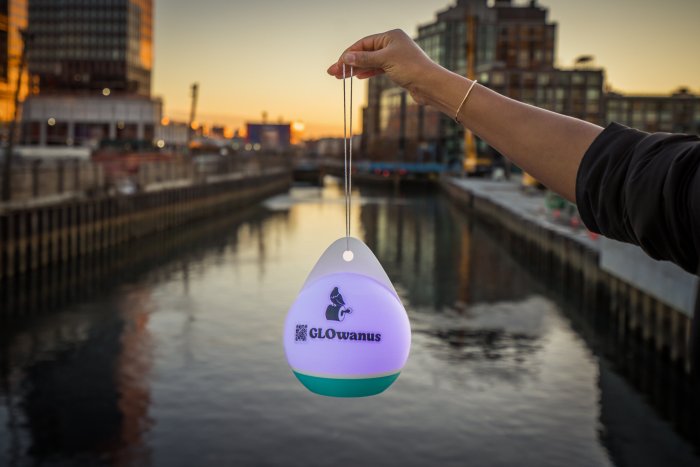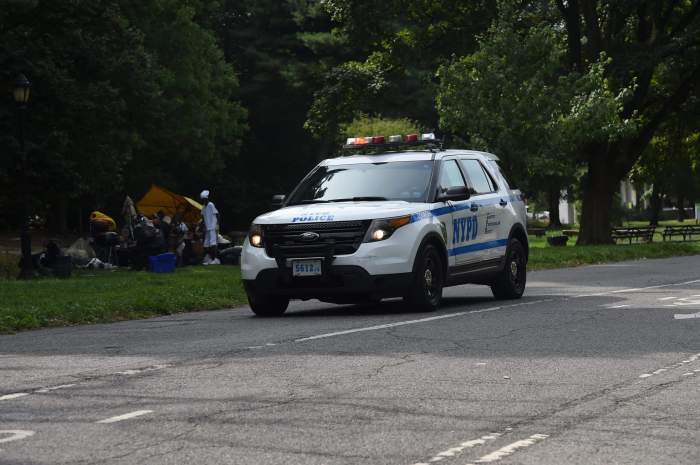It’s a fishy situation.
State officials cannot sign off on placards that ban all fishing in the fetid Gowanus Canal, which past federal studies found filled with life-threatening chemicals, because they lack any actual data on how those toxic substances taint species that swim inside the channel itself, a bigwig from New York State’s Department of Health recently told Gowanusaurs.
Locals pushed for signs that ban angling in the federal Superfund site outright after the state revealed draft signs that warned fishers about the dangers of consuming marine life caught in it earlier this year. But the state data used to produce the draft placards pertains to fish in all of New York Harbor, not just Brooklyn’s Nautical Purgatory, and without doing specific tests in the latter, officials claimed they could not entirely prohibit the sport there.
“Part of the problem is that we actually don’t have any data for the Gowanus Canal, and in order for the Department of Health to set a fish advisory, we must have data,” said Audrey Van Genechten during a June 26 meeting of the Gowanus Community Advisory Group.
The Environmental Protection Agency leaders overseeing the canal’s cleanse in March presented the preliminary signs they created with the state, which noted the dangers of consuming fish that may contain chemicals, and listed around 15 aquatic species — including the American eel, gizzard shad, striped bass, and blue crab — with warnings about how much of each could be safely consumed if caught in the channel.
For instance, the placards — written in English and Spanish, and set to be placed at points on 15 streets near known fishing spots — cautioned that men older than 15 and women older than 50 could munch on up to six blue crabs from the Gowanus Canal per week, but that females younger than 50, especially those who are pregnant, and kids younger than 15 should not risk taking a bite, according to a draft copy the Brooklyn Paper obtained.
Locals at the time demanded a simpler sign that axed the list of species and just showed a fish on a hook with an “X” through it, but state Health Department officials instead returned last month proposing another draft that generally warned not to fish, crab, swim, or boat specifically when the canal is being dredged — such as during the hours that work for the current dredging-and-capping pilot program in the Fourth Street Turning Basin takes place.
But Gowanusaurs on the advisory group, as well as federal officials, said the redesigned sign’s warning is not strong enough, and that the placards must forbid people from casting lines altogether because of the noxious sludge — and tampons, dead cats, and poo — contaminating the canal.
“It’s not the dredging that impacts the situation of the fish, it’s the condition of the canal as it is right now,” said Environmental Protection Agency project manager Christos Tsiamis, the man leading the waterway’s ongoing scrub.
The state’s advisories on consuming creatures swimming throughout New York Harbor, where the Gowanus Canal’s water flows in and out of, however, are rigorous enough to protect area anglers, according to Van Genechten.
“Essentially they felt that the current advisory for the Upper Bay was strict enough based on the fish data that was provided to the Department of Health,” she said.
And because much of the marine life moves freely between the harbor and Brooklyn’s Nautical Purgatory, conducting a specific study on species from the canal itself would be difficult and costly, according to an attorney for the federal environmental agency.
“To come up with very specific, detailed information on the fish just in the canal, as opposed to those in New York Harbor, would require a very extensive and expensive study,” said Brian Carr.
Still, one clean-water advocate at the meeting blasted the state for not doing enough to protect neighborhood fishers, who are known to regularly cast in the canal and from the nearby Valentino and Columbia Street piers in Red Hook, in its designs for the signs.
“I don’t get why the Department of Health has to hold back from what’s on these signs,” said Mike Dulong, a lawyer for environmental group Riverkeeper. “Why aren’t we just trying to protect the community?”



















